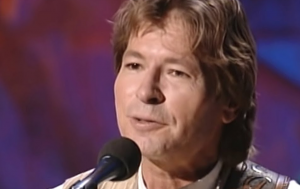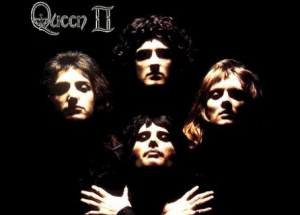The Songs Most Led Zeppelin Fans Don’t Know John Paul Jones Wrote

via CBS News / Youtube
John Paul Jones is the oft-overlooked unsung hero of legendary hard rock progenitors Led Zeppelin. In the band’s iconic lineup, Jones played bass, keyboards, and even provided essential backing vocals. His multifaceted talents extended far beyond his role as a bassist, making him an indispensable part of their sonic identity.
Jonesy was the glue that held Led Zeppelin’s complex musical arrangements together. His bass lines were the foundation of their heavy sound, providing the rhythmic backbone that allowed Jimmy Page’s guitar and John Bonham’s drums to soar.
View this post on Instagram
Like his fellow session musician and bandmate Jimmy Page, Jones built quite a name for himself in the session circuit before the latter pulled him into a four-piece band that manufactured magic in the studio and on stage.
While Robert Plant and Jimmy Page often received the spotlight for their lyrics and guitar work, Jones made significant contributions to the band’s compositions. The multi-instrumentalist used his musical prowess to shape Led Zep’s diverse catalog, from the bluesy “Dazed and Confused” to the epic “Stairway to Heaven.”
In the formidable discography of such iconic band. here are some of the gems that Jonesy let his genius shine.
5. “All My Love” (In Through the Out Door, 1979)
“All My Love” departs from the conventional love song theme; instead, it serves as a heartfelt tribute to Robert Plant’s son, Karac, who tragically succumbed to a stomach virus in 1977 at the tender age of five while Led Zeppelin was touring in America.
A collaborative effort between Led Zeppelin’s vocalist Robert Plant and JPJ, this is one of the only two songs that do not feature a writing credit for Jimmy Page. The other one was “South Bound Saurez”.
During the recording sessions for In Through The Out Door, the band had experienced a period of discord, with guitarist Jimmy Page and drummer John Bonham often absent or late. Consequently, Plant and Jones took the lead in creating many of the songs, with Page and Bonham contributing their parts during late-night sessions.
View this post on Instagram
Led Zeppelin’s repertoire is not known for its use of synthesizers, but “All My Love” has a highlight with a wistful synth solo from Jonesy.
The recording of the 1979 album took place at Polar Studios in Stockholm, which happened to be owned by the Swedish pop group ABBA. John Paul Jones utilized a Yamaha GX-1 synthesizer owned by Benny Andersson of ABBA for this particular track.
4. “Good Times Bad Times” (Led Zeppelin, 1969)
This is the song that introduced the world to Led Zeppelin, the opening track of the band’s seminal self-titled album released in 1969. Jonesy, who wrote the bass riff, said “Good Times Bad Times” was one of the most difficult songs he’s ever had to play.
In a 2012 Rolling Stone interview, Page shed light on how the band contributed to the creation of their first single: “John Paul Jones came up with the riff. I had the chorus. John Bonham applied the bass-drum pattern. That one really shaped our writing process. It was like, ‘Wow, everybody’s erupting at once.'”
While the lyrics of the song may come across as somewhat disjointed, “Good Times Bad Times” has a powerful rock vibe that typically distracts most listeners from this fact.
View this post on Instagram
Plant’s vocal narrative revolves around the themes of coming of age, experiencing first love at the age of 16, and losing his beloved to a brown-eyed man (potentially inspired by Chuck Berry’s “Brown Eyed Handsome Man”). Toward the conclusion of the song, Plant passionately declares his enduring love for his woman back home, vowing that their bond will never be severed.
Page clarified in the BBC book The Guitar Greats, “‘Good Times, Bad Times’ was born out of a riff, with a substantial contribution from John Paul Jones on bass. The distinctive bass drum pattern caught everyone by surprise, as it was widely speculated that Bonzo was using two bass drums when, in fact, he was using just one.”
And that’s how you enter the scene in style.
3. “Black Dog” (Led Zeppelin, 1969)
Here’s another opening Lep Zed track, but this time it was to usher in one of the best albums ever made in the history of rock, the defiantly unnamed fourth album fans and critics fondly called Led Zeppelin IV.
“Black Dog”, named after a nameless furry friend they made while they were recording the track at Headley Grange in Hampshire, England, was also a song laden with traces of Jonesy’s genius.
The Led Zep bassist had a musical epiphany after listening to Muddy Waters’ 1968 album, Electric Mud. He aimed to experiment with a type of “electric blues with a rolling bass part” and “a riff that would be like a linear journey.”
View this post on Instagram
As the band began assembling the Led Zeppelin IV, Jones introduced the distinctive riff of “Black Dog”, laying the foundation for the song’s development. Initially, the version he presented was humorously intricate, with a time signature of 3/16, but this was eventually simplified to accommodate the band’s performance.
In this song, Robert Plant sings about a seductive woman who stirs his lustful desires but is evidently not a suitable partner for him. He croons his preference for a “steady rollin’ woman” instead.
2. “I’m Gonna Crawl” (In Through the Out Door, 1979)
“I’m Gonna Crawl” is the closing track from Led Zeppelin’s final studio album, In Through the Out Door, and another song that Jonesy mostly wrote.
It’s about yearning this time, about a man who loves his woman so much he’s going to go on all fours just to get near her. Just another sexy Plant-powered ballad.
As mentioned in a previous item in this list, In Through the Out Door features less of Jimmy Page’s spellbinding wizardry, hence the distinct vibe of the album.
View this post on Instagram
“I’m Gonna Crawl” embodies a laid-back blues composition accentuated by Jones’ synth. Plant deliberately crafted the song to evoke the essence of mid-1960s soul music, drawing inspiration from artists like Wilson Pickett and Otis Redding.
Jonesy laid the foundation for this track using his newly acquired Yamaha GX1 synthesizer, affectionately dubbed “The Dream Machine”.
1. “In The Light” (Physical Graffiti, 1975)
“In The Light” is one of the more unique Led Zep records due to the fact that Jones, who composed the song on a synthesizer, finds it hard to reproduce the beautiful echoing intro live.
Another uniqueness of the song was the eerie guitar sound at the start, which was Jimmy Page quirkily exploring some sonic boundaries with his famous violin bow on an acoustic guitar, as a lonesome backdrop to Jonesy’s solo.
Jimmy Page playing his guitar with a violin bow, 1970s. 🎸
Do you know this? 😉 pic.twitter.com/c3RrUfS5zl— 🎸 Rock History 🎸 (@historyrock_) June 3, 2023
This trick was something he also did with other Led Zeppelin tracks “Dazed And Confused” and “How Many More Times”. Talking about “In The Light” in The Guitar Greats, Page said:
“I had no inkling at the time that John Paul Jones would come up with such a remarkable synthesizer introduction. Additionally, there are the bowed guitars at the beginning, creating an overall drone effect. We experimented with drones in several songs, like “In The Evening”, but when he crafted that introduction for “In The Light”, it was truly exceptional.”
A bootlegged demo of this song exists with different lyrics and an alternate opening. In that version, Jones initiates the piece with a straightforward synthesizer sequence, and Plant begins with, “Sunshine brings laughter…”
View this post on Instagram
















